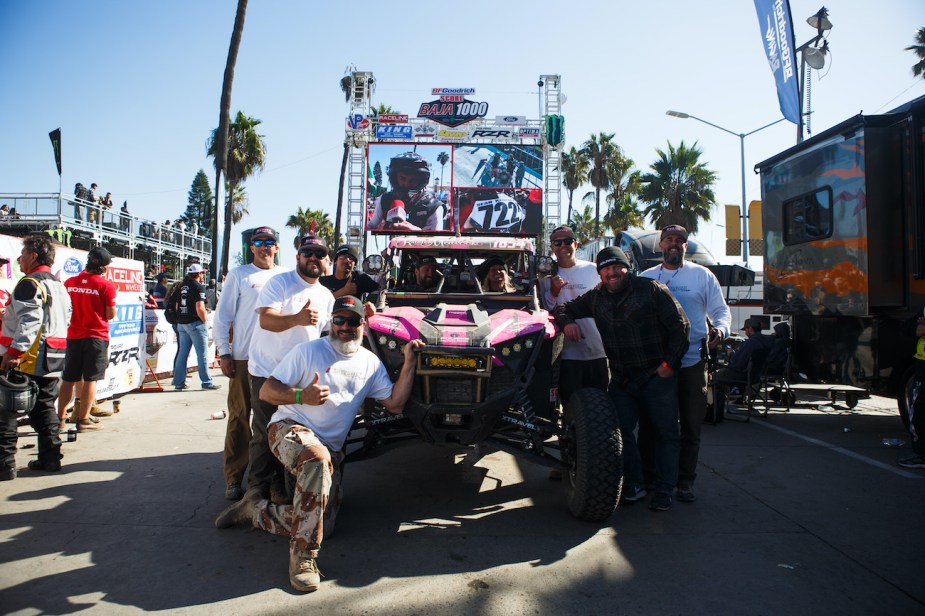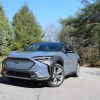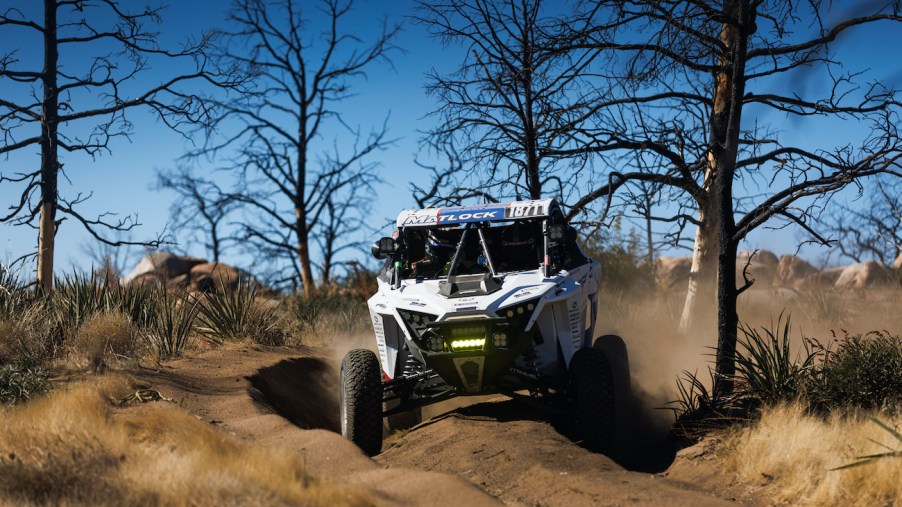
Chasing the Baja 1000: A Wild Ride Filled With Excitement, Waiting, and Tacos
“We’re going to be tired and cranky by the end of this,” said Kurt Spurlock – from Men’s Journal.
I nodded my head in agreement as we both looked at a route map of the Baja 1000 race that was taking place the next day.
As I stared at the map, I couldn’t wrap my head around what the drivers would have to go through during the race. Much less, I had no idea what I would be going through either. Both Kurt and I signed on to be embedded with the chase trucks supporting the Matlock Racing team. The team is headed by Wayne and Kristen Matlock, a husband and wife duo that have been racing for nearly 20 years.
This year, both racers were piloting their own cars in an attempt to finish first in the Pro UTV Open class. They had been racing all year, finishing three out of four of the SCORE International series thus far – San Felipe 250, Baja 400, and the Baja 500.
This last race of the year, the Baja 1000, was the longest, harshest, and toughest one of them all.
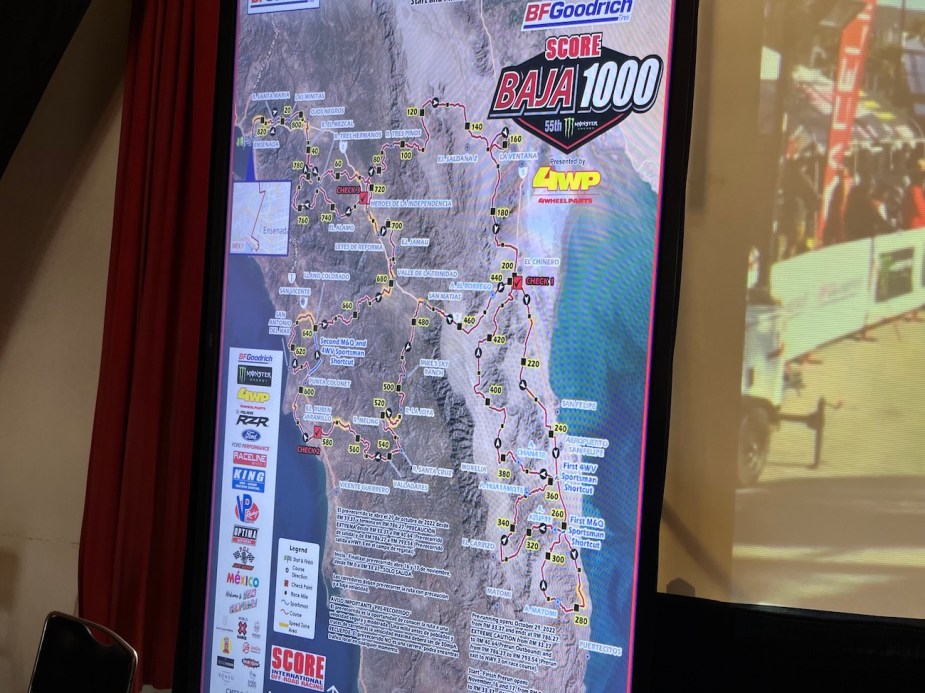
What is the Baja 1000 race?
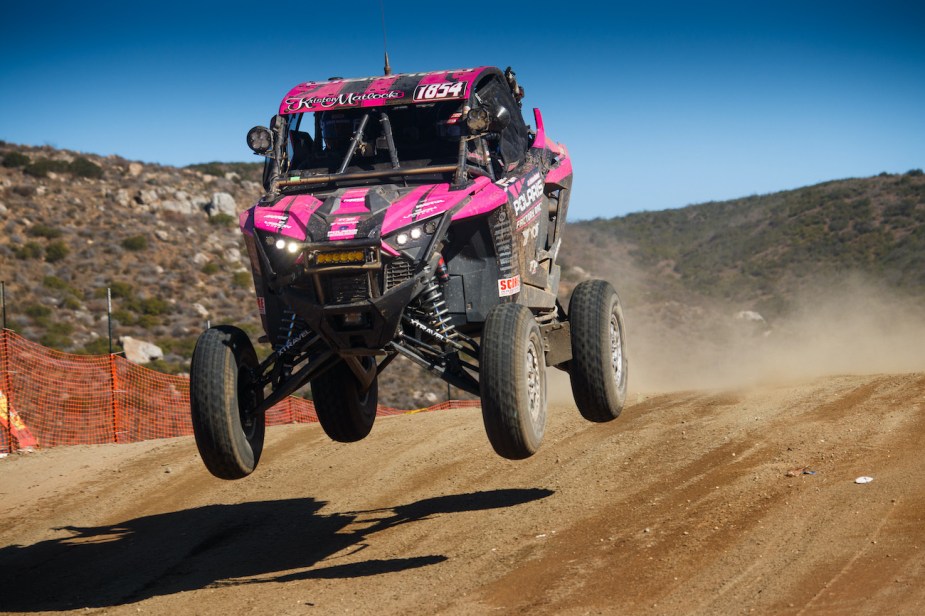
The Baja 1000 is a race that’s held every year in November in Baja California, Mexico. Although this peninsula is only a few hundred miles south of LA, you would think you’re on a different planet. The landscape is barren and populated only by some random beach resort towns, farms, and an 18th-century mission.
It’s also the perfect place to act as the proving ground for various trophy trucks, UTVs, motorcycles, and ATVs and the drivers that pilot them. The land is unrelenting with its countless rock features, sand dunes, and ditches that provide challenges for the vehicles. But even worse are the hot days, cold nights, and hours of driving that lay ahead for the race teams.
It’s called the Baja 1000 because the length of the race is close to 1,000 miles. I say that because this year’s race was 830 miles long, and it was routed in a loop that started and ended in Ensenada, Mexico.
The original Baja 1000 race was a point-to-point race that started in Ensenada and ended in La Paz, which is a little more than 1,000 miles. They still do this configuration, but it’s only every three years.
Although the Baja 1000 is a race, at the end of the day, it’s more about who finishes in one piece than who finishes first.
Chasing the Baja 1000 was more about providing support than seeing the actual race
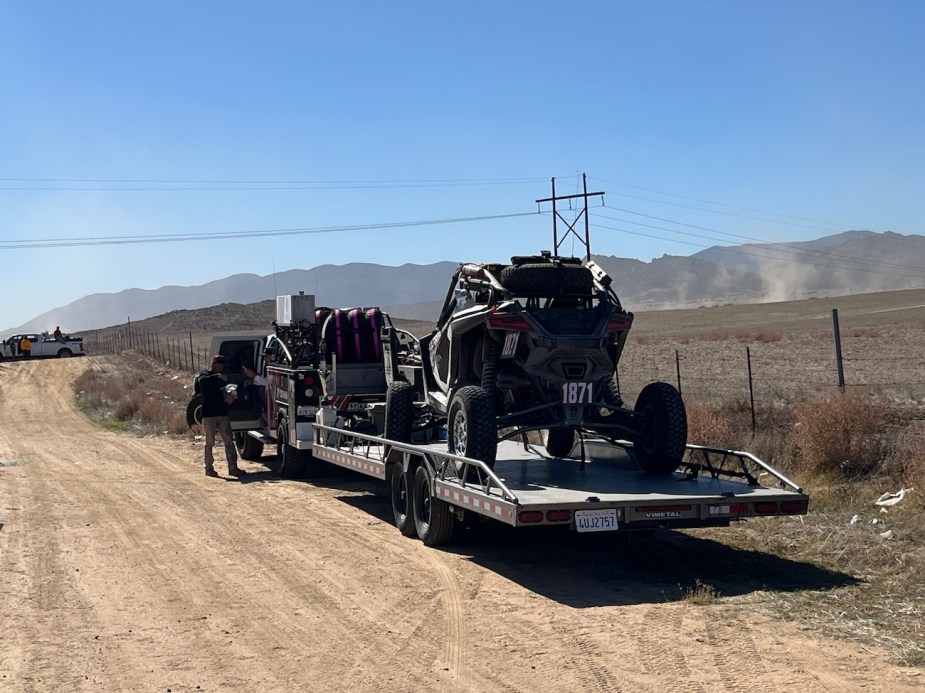
The race started on Friday, November 18, and was set to go until the last vehicle crossed the finish line. For the Matlock Racing team, there were six chase trucks – three to support Kristen’s car and three for Wayne’s.
Both racers were driving Polaris RZR Pro Rs, much akin to the one I drove a few months earlier. But these were fitted with roll cages, a bevy of safety equipment, intricate cooling systems, and other modifications to get them through the grueling race.
After the drivers loaded into their cars and we were loaded into the chase trucks, the Matlock Racing team was off. The truck I occupied was in charge of providing support for Wayne’s car. There were a total of 17 pit stops, but the chase trucks would leapfrog between them to cover each one.
Our team, Chase 2, was scheduled to be at 10 of the stops and mainly do visual inspections of the car when it drove by. At the first stop, right after the starting line, we waited for the Matlocks to drive by and stood waiting to see if they needed an inspection. Nope. So it was off to the next stop.
At this point, the only part of the race that I saw was the trophy trucks and UTVs driving by at each checkpoint. Otherwise, my only knowledge of what the racers were going through was from the communications via satellite communications on a walkie-talkie inside our truck.
Continuing the chase included a lot of hurrying up and waiting
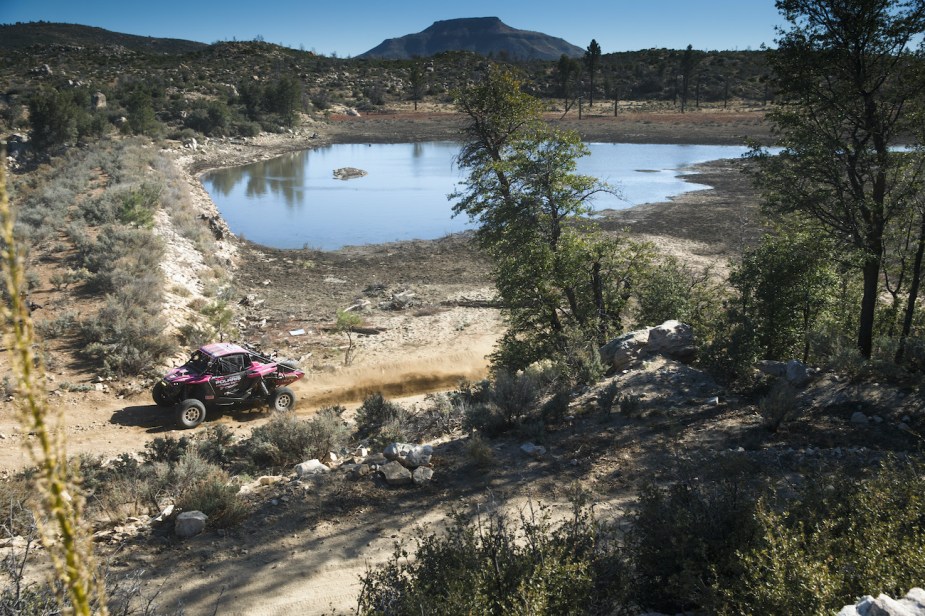
Our chase truck consisted of Dustin, a seasoned veteran of the Baja that served on the Matlock chase team for years; Robbie, an off-road enthusiast, mechanic, and landscaper by trade; and Nick, our driver who had mechanical experience and a unique affinity for romance novels.
Fortunately, the Ford F-250 that we were in was spacious enough for all four of us. It was also powerful enough to tow the extra fuel, tools, and pre-runner Polaris RZR that would serve as an extra parts runner if needed.
The next two pit stops consisted of waiting for Wayne’s car to pit in for a visual inspection. The first inspection only took eight seconds, and he was off into the dust. At the next stop, we waited for nearly an hour for him to drive by. He occasionally communicated to tell us which mile marker he was at.
In the meantime, I posted up at certain spots in the pit stop area to get pictures and videos of the vehicles speeding by and pitting in. Trucks would come so close to the spectators that one wrong move and it looked like the car could take out a whole crowd.
Unfortunately, Wayne missed that second pit stop, so it was back into the truck and off to the next one. I heard they get penalties for missing pit stops, but at least the Matlock team was doing better than some of the others. One team’s trophy truck burnt to the ground. Hopefully, everyone was OK.
We could see bits of the action at some points in the chase route
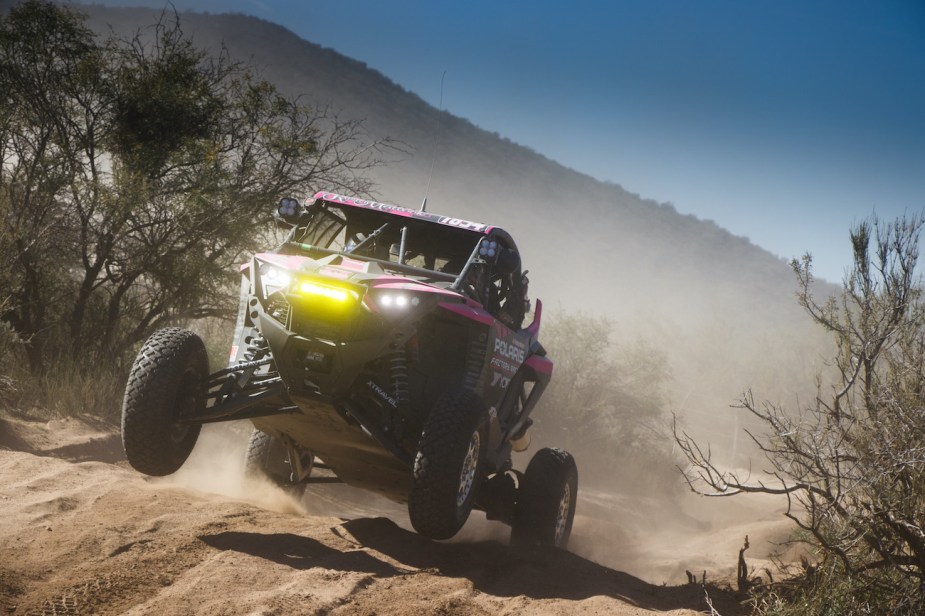
The chase truck only drove on the paved roads surrounding the actual race course, so there were only a few instances where we got to drive near the action.
As dusk fell upon the Baja, we drove next to Wayne at one point as we marveled at the sunset and dust kicked up in the air. Otherwise, it was more about watching the miles slipping by as we drove into the night toward the remaining pit stops.
The nighttime pit stops included freezing temps and a fire
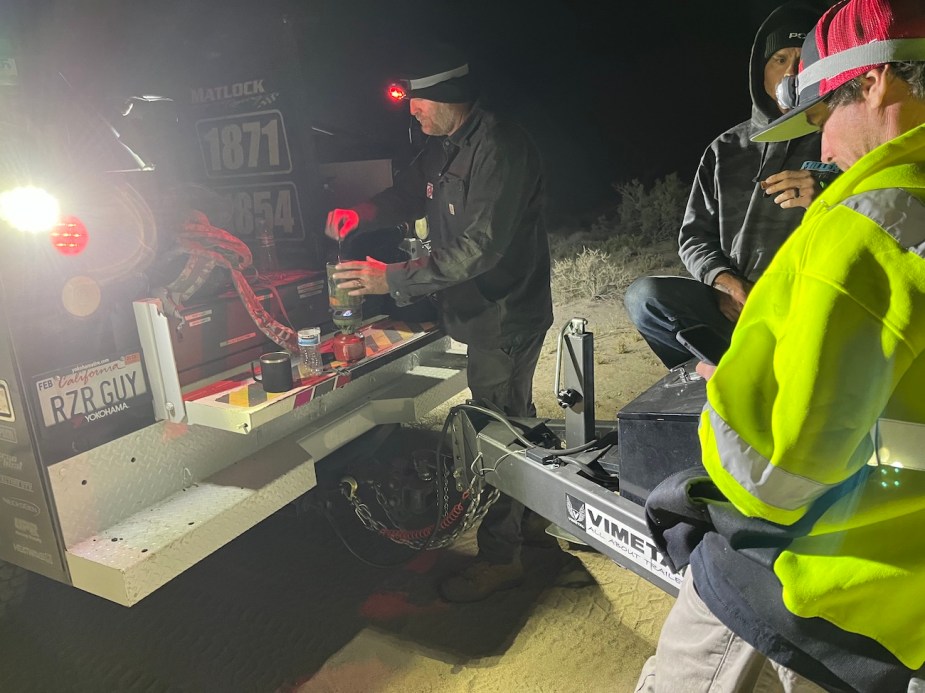
The first pit stop in the dark involved more waiting and another visual inspection when Wayne drove by. This inspection took a little longer, but it was necessary. Luckily, his car was doing just fine, but we heard that the shocks on Kristen’s car were bottoming out. That was a job for her chase team to look after.
We took off again into the night; the next stop required unloading the pre-runner RZR so that two people could drive it over to the track and provide the pit stop aid for Wayne. The large truck and trailer wouldn’t have been able to traverse the hilly terrain.
Before taking off to the pit stop, Dustin built a fire in the sand and made coffee using a handy butane-powered coffee maker. It was 35 degrees Fahrenheit, and I could barely feel my toes.
“Want some?” he asked me. “It tastes like jet fuel.”
“No, thanks,” I replied.

I had been snacking on nothing but trail mix all day, and my stomach was at ease. The last thing I needed was to add powdered coffee into the mix and mess things up. After sipping on some coffee and warming up by the fire, Dustin and Robbie took off into the night in the RZR.
Nick and I stayed behind. I watched as chase trucks and race vehicles appeared out of nowhere in the night and drove by us. Nick posted up next to the truck, quietly staring at his phone, reading his latest romance novel.
“That’s one way to pass the time,” I thought.
Eventually, Dustin and Robbie returned to the truck. They informed us that Wayne’s car had a broken rear hub, and the wheel studs were holding onto the wheel with a hope and a prayer. Luckily, he was able to continue to the next stop.
Fortunately, only one large repair was needed during the race
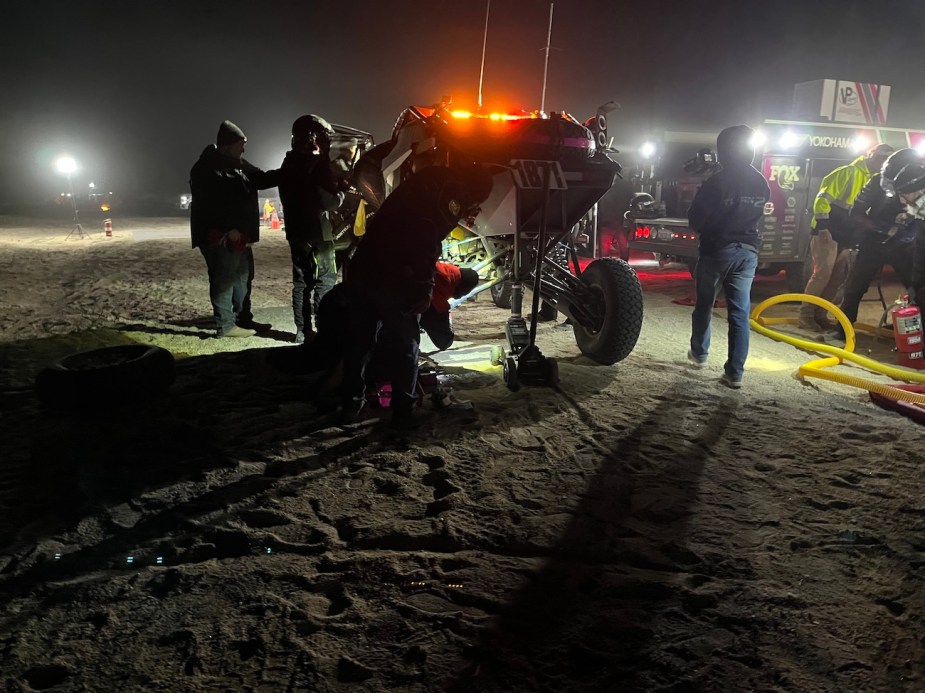
The next pit stop called for two of Wayne’s chase teams to be there, which was a good thing because they needed to change out the rear hub on the race vehicle and switch drivers. I’ve never seen a team of mechanics work so hard or so quickly in the dead of night.
They had the whole rear hub, and radius arms switched out in less than 20 minutes or so, which was a feat in the cold weather. During that time, Wayne got out of the car and switched with Josh – the backup driver. He spent a couple of minutes telling him what to look out for.
“The adaptive suspension doesn’t work unless you pull over, turn the car off for five seconds, and then turn it back on,” Wayne instructed him.
He then went on with a laundry list of other minor issues the car was having. After that, he ended with, “Other than all that stuff, she’s running fine. Have fun!”
After the rear hub was changed out, the car was re-fueled, and everything was checked, Josh sped off into the night. It was back into the nice warm truck for us.

Then, there was more waiting and tacos
The last pit stop at nighttime was the longest. The other chase teams would cater to the race cars during the few pit stops until the race cars eventually got to we were in a place called “Valle T.” Once we got there, we visited a taco stand that allegedly made some of the “best tacos ever,” according to Dustin.
He handed me a plate of four of them and said, “Here, this might blow your butthole out, but it might not. Have fun.”
It was 2 a.m., super cold outside, and there wasn’t a bathroom in sight. That thought alone made my stomach a little uneasy. But fortunately, the tacos were really good, and they settled just fine.
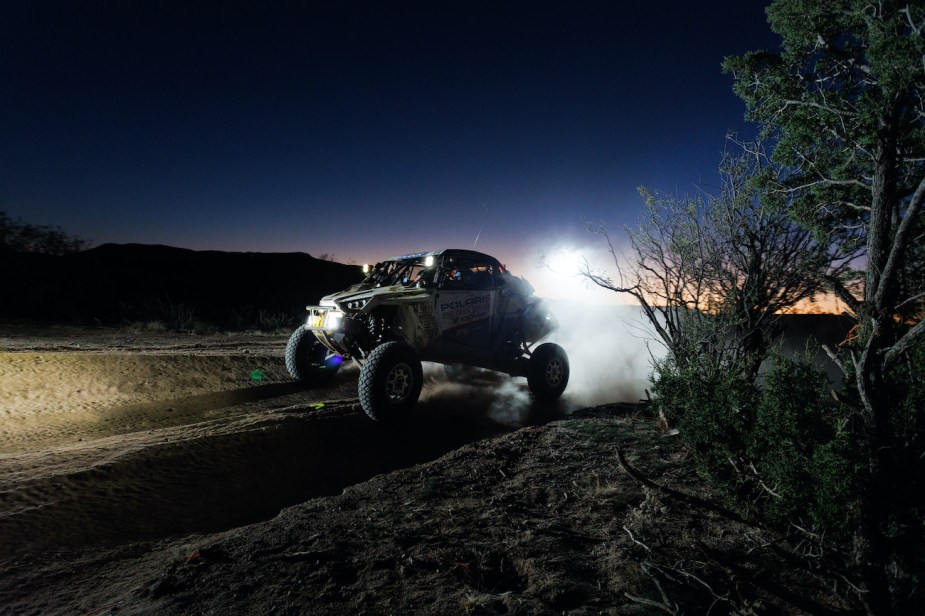
We waited for three hours for Josh to pull up in the race car so our pit crew could refuel it. During that time, we heard about other race teams that left early because their cars broke or got burned up.
While waiting at Valle T, Dustin gave one team a spare radius rod that they needed to keep going. A couple of guys from another team asked us if we had a welder so they could weld the chassis on their car back together.
The amount of teamwork that goes into this race amazed me. Not just from our own team, but the fact that all of the teams were open to helping each other out.
Josh eventually pitted in and got the car refueled. He then sped off into the night.
The home stretch was a glorious sight
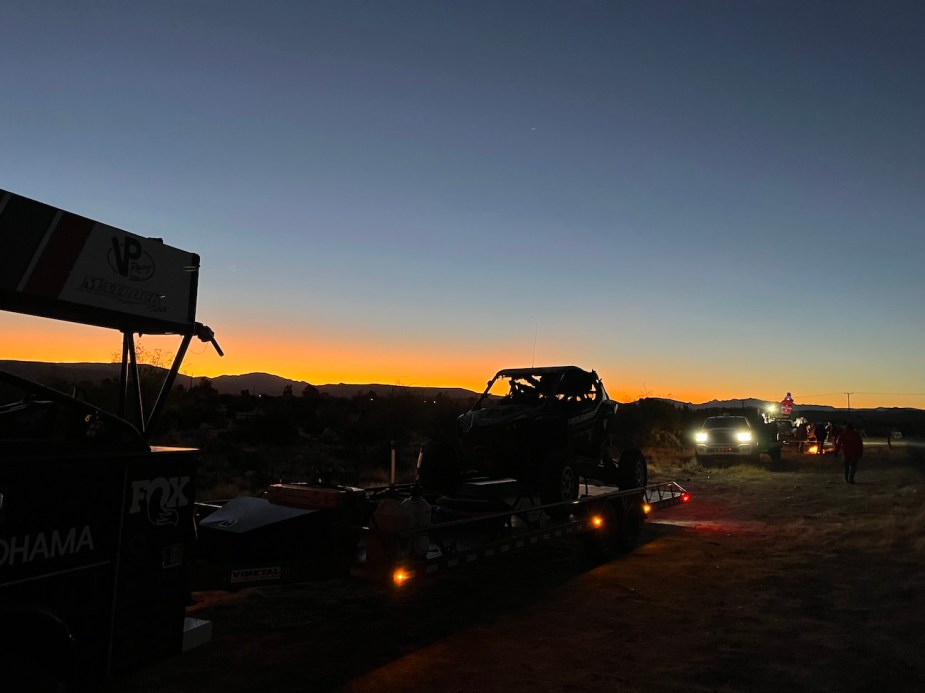
We left Valle T and drove through the next couple of pit stops, which were visual inspections. The sun started rising, and the Baja scenery looked beautiful as the sky had an orange and blue hue.
The final pit stop was again a visual inspection that lasted less than 15 seconds. Josh was doing just fine behind the wheel, and the car looked like it was running well. After that stop, we drove to the finish line back in Ensenada.
When we got there, Josh had just crossed the line and was giving a short interview. At this time, Kristen Matlock was still about two hours away. She had fallen behind due to a few technical issues with the car that involved the suspension.
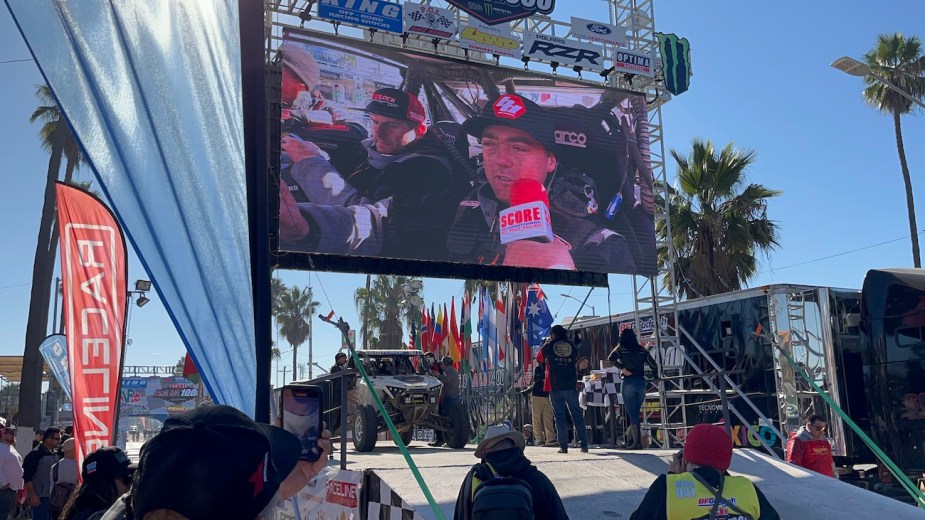
She eventually finished, shaken, and stirred by doing the whole race by herself. She finished the race and came in fourth place in the category with a time of 24:50:47. Wayne’s car finished third place with a time of 21:54:37.
I left the race feeling tired and worn out from just observing everything. By the end of it, I had so much respect for the Matlock Racing team and all of its supporters. To sum it up best, I can paraphrase Dustin telling me at the finish line:
“At the end of the day, or the race, It’s all about the comradery and drinking beers at the finish line. It doesn’t matter if you come in first, second, or third. Everyone coming together is what Baja is all about.”
